It’s the quandary you face every day – what kind of fresh produce should your buy and how do you find the food which is the most beneficial for health. Farmers worldwide use pesticides to help the crops grow, but at the cost of our health. Pesticides do not kill just pests, but they harm every kind of life, whether it’s you, me, fishes, birds, flowers – in fact, all life. Though there is an outcry over avoiding pesticide free food, there is a long way to go for the time when all produce is pesticide free or organic. So how do you buy and eat fruits and vegetables which are free of pesticides – here are some tips:
Findings from research
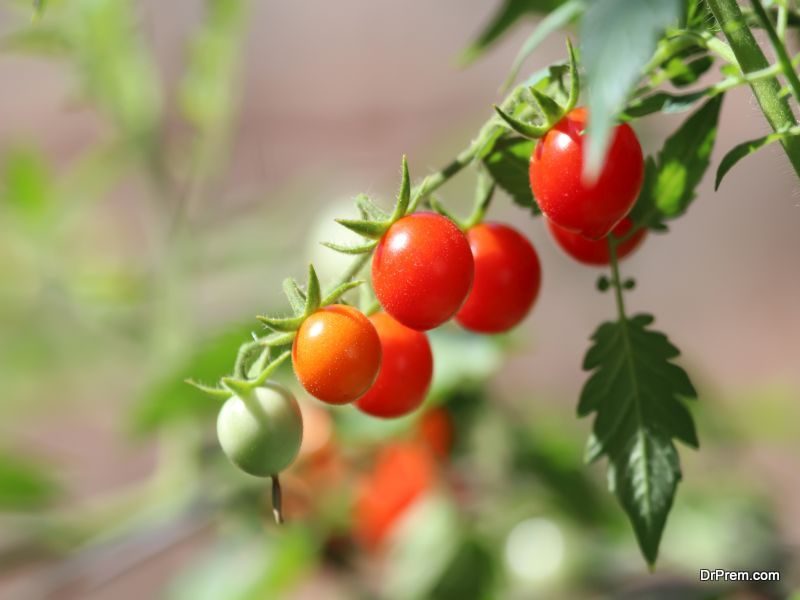 Some research has revealed that certain fruits/ vegetables have low pesticide residue, while others contain a high amount of chemicals. Experts suggest the best way is to buy organic options for the produce which have high pesticides content and buying conventionally grown vegetables and fruit which retain the least amount of pesticides.
Some research has revealed that certain fruits/ vegetables have low pesticide residue, while others contain a high amount of chemicals. Experts suggest the best way is to buy organic options for the produce which have high pesticides content and buying conventionally grown vegetables and fruit which retain the least amount of pesticides.
Before going on to the lists of desirable/undesirable fruits and vegetables, let’s get to know the difference between ‘organic’ and ‘pesticide free’.
What is organic and pesticide free produce?
 Organic fruits and vegetables are produced without the use of synthetic pesticides and fertilizers. Farmers use beneficial worms, diatomaceous earth to provide nutrition to plants. Natural pesticides such as Derris plant roots (rotenone), dry chrysanthemum flowers and insecticidal bacterium is used to destroy pests. ‘Organic’ is certification regulated by USDA and the governmental agencies in other countries. Organic food has to be grown on land which is free from synthetic pesticides for at least three years.
Organic fruits and vegetables are produced without the use of synthetic pesticides and fertilizers. Farmers use beneficial worms, diatomaceous earth to provide nutrition to plants. Natural pesticides such as Derris plant roots (rotenone), dry chrysanthemum flowers and insecticidal bacterium is used to destroy pests. ‘Organic’ is certification regulated by USDA and the governmental agencies in other countries. Organic food has to be grown on land which is free from synthetic pesticides for at least three years.
‘Pesticide free’ is a rather loose term which is not as strictly regulated. Pesticide-free produce may not have synthetic pesticides but might have been grown using natural pesticides and on land which is not free from pesticides. You might also have noticed the term ‘pesticide residue free’. This means that though the food was grown using pesticides, there might be no residual pesticides in the produce at the time of harvesting. Usually, third party companies test for pesticide residue.
Measures you can take to reduce pesticides from produce
Organic produce seems to be the most desirable for your table. But usually, whichever corner of the world you’re based in, organic produce is quite expensive. One of the best things you can do is buy certain organic veggies and fruits which otherwise have high pesticides content. Check out these few things you can do to reduce the amount of pesticides in food:
1. Rinse all vegetables and fruits before cooking
 It has been scientifically proven that rinsing produce before using under running tap water can eliminate pesticide residue. You should rinse for a minimum of at least 30 seconds before you cook them. Rinse organic as well as conventional produce which will remove bacteria, non-chemical contaminants and pesticides.
It has been scientifically proven that rinsing produce before using under running tap water can eliminate pesticide residue. You should rinse for a minimum of at least 30 seconds before you cook them. Rinse organic as well as conventional produce which will remove bacteria, non-chemical contaminants and pesticides.
2. Soak them in baking soda
A study by the Massachusetts University has revealed that soaking produce in a baking soda and water solution is very effective to get rid of pesticides in veggies and fruits.
3. Cook

If you’re buying conventionally produced vegetables, its best to cook them as cooking also reduces pesticide content of vegetables, according to studies.
4. Grow your own food
One way to eat clean food is to grow your own food. You can use organic seeds, make compost to fertilize the vegetables you plant in your backyard or in pots in your balcony, or in vertical garden/s in the house. It won’t be enough but at least, you’ll be easy about eating some food.
You and your friend/neighbors/family can lease a plot of land and grow veggies and fruits on it in an organic manner and enjoy the taste of produce you have planted and cared for. Get your kids involved so that they will learn how to grow their food themselves too.
Here are the lists of the cleanest produce as well as the most contaminated food so that you can decide what to buy:
List of cleanest produce
1. Avocados
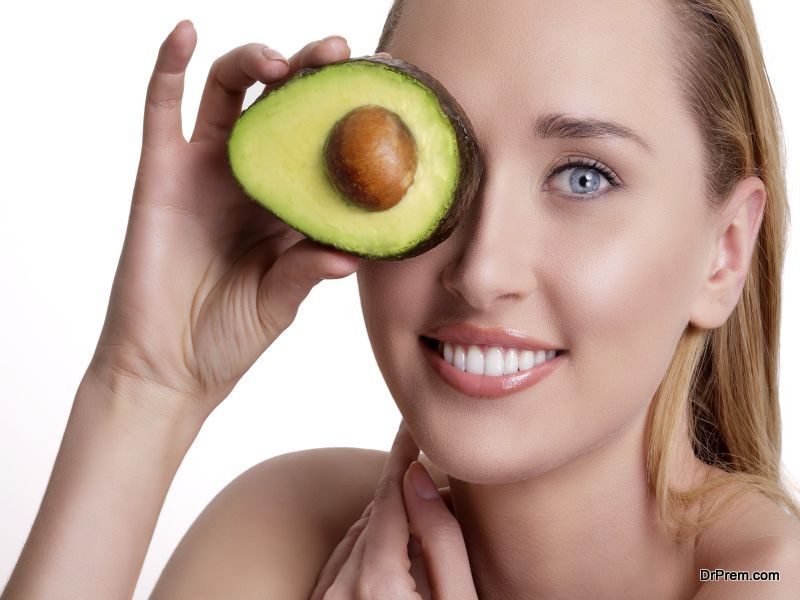 Less than 1% avocados have been found to have pesticides, and that too, just one pesticide. So go ahead and enjoy this awesome superfood.
Less than 1% avocados have been found to have pesticides, and that too, just one pesticide. So go ahead and enjoy this awesome superfood.
2. Sweet corn
Conventionally grown sweet corn too has very little residue. Though read labels before buying as some are grown from GMO seeds.
3. Pineapples
 90% of the delicious pineapple was found to be pesticide residue free.
90% of the delicious pineapple was found to be pesticide residue free.
4. Cabbage
86% of cabbage was residue free, with very little samples which were tested contained over 2 pesticides.
5. Onion
 10% of onions tested had pesticide residue.
10% of onions tested had pesticide residue.
6. Frozen sweet peas and papayas
Both of these food items were found to have less than two kinds of pesticides, and 80% of both were free of chemical residue.
Kiwi, Honeydew Lemon, mangoes, eggplant, cantaloupe, broccoli and cauliflower were also found to have low pesticide residue.
List of the worst offenders
1. Strawberry
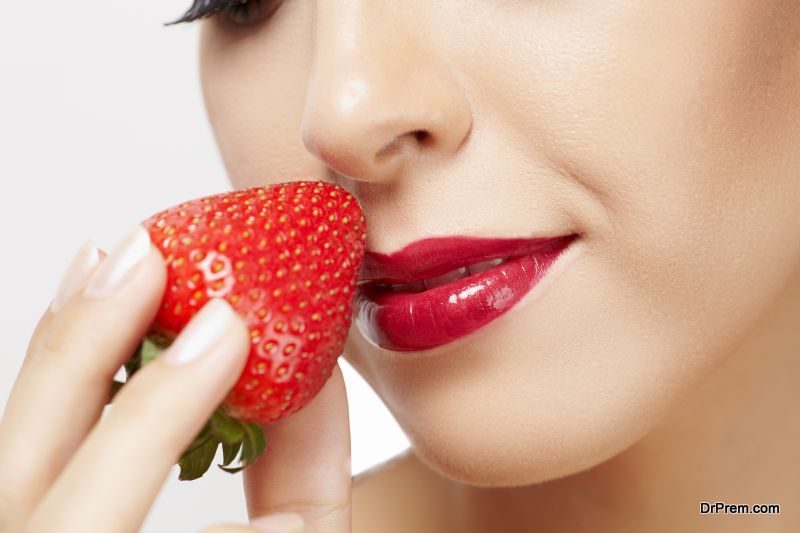 Just one strawberry was found to contain a whopping 22 pesticides, making it the most contaminated food. Better think twice before indulging in your craving for strawberries and cream!
Just one strawberry was found to contain a whopping 22 pesticides, making it the most contaminated food. Better think twice before indulging in your craving for strawberries and cream!
2. Spinach
97% of spinach tested for pesticides contained pesticide residue, especially permethrin, which is a neurotoxic insecticide.
3. Apples
 ‘An apple a day keeps the doctor away’ may not be true any longer. It was found that 80% of conventionally grown apples had diphenylamine in them. Perhaps this is one fruit that you can buy organic.
‘An apple a day keeps the doctor away’ may not be true any longer. It was found that 80% of conventionally grown apples had diphenylamine in them. Perhaps this is one fruit that you can buy organic.
4. Nectarines
94% of nectarines tested had more than 2 pesticides, and some even had 15 pesticides’ residue.
5. Grapes
 Over 96% of grapes tested had pesticide residue.
Over 96% of grapes tested had pesticide residue.
6. Peaches
99% of peaches had residual pesticide of four kinds and more.
7. Cherries, pears and tomatoes
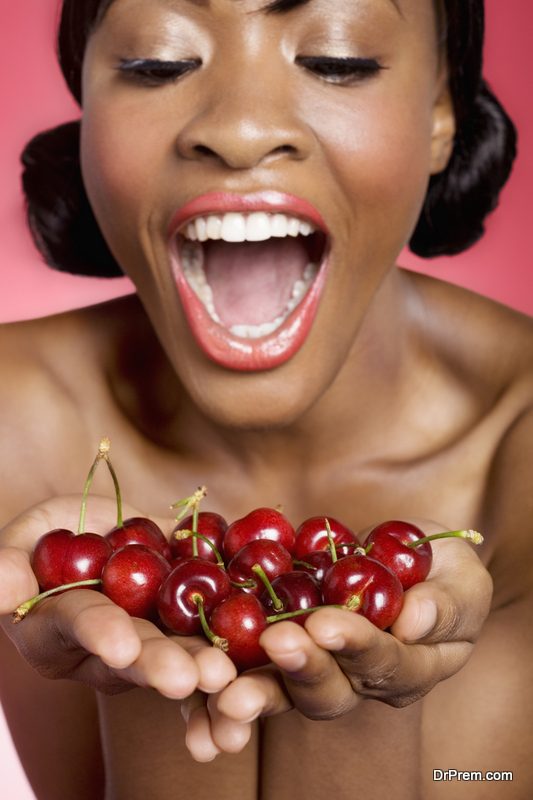 All of these had high pesticide residue. One tomato sample was found to contain 15 pesticides and breakdown contents.
All of these had high pesticide residue. One tomato sample was found to contain 15 pesticides and breakdown contents.
8. Celery, potatoes, sweet and hot bell pepper
These vegetables had pesticide residue too.
Some more facts about pesticides
1. The waste
 Pesticides have pervaded human and animal lives like no other chemicals ever. One may refer to them as a necessary evil of the present times. On the one hand, they help control insects, weeds, and other pests from destroying crop yield and onn the other hand, they adversely affect human and animal lives by entering into the food chain. While outlining these grave threats, recent studies have shown that about 98 percent of insecticides and 95 percent of herbicides do not reach their desired destination. Instead, they enter into water, air, and food to cause various health problems.
Pesticides have pervaded human and animal lives like no other chemicals ever. One may refer to them as a necessary evil of the present times. On the one hand, they help control insects, weeds, and other pests from destroying crop yield and onn the other hand, they adversely affect human and animal lives by entering into the food chain. While outlining these grave threats, recent studies have shown that about 98 percent of insecticides and 95 percent of herbicides do not reach their desired destination. Instead, they enter into water, air, and food to cause various health problems.
2. Origin
To get rid of the pests, different methods for killing and removing pests from agricultural fields have been used since 2000 BC. The first recorded sulfur dusting pesticide was used in ancient Mesopotamia about 4500 years ago. However, the most harmful types of pesticides for human and animal lives have been used in modern times only. At present, about 72 percent of the total pesticides produced are used in farming and that is how they are released into the environment to cause harm.
3. The numbers
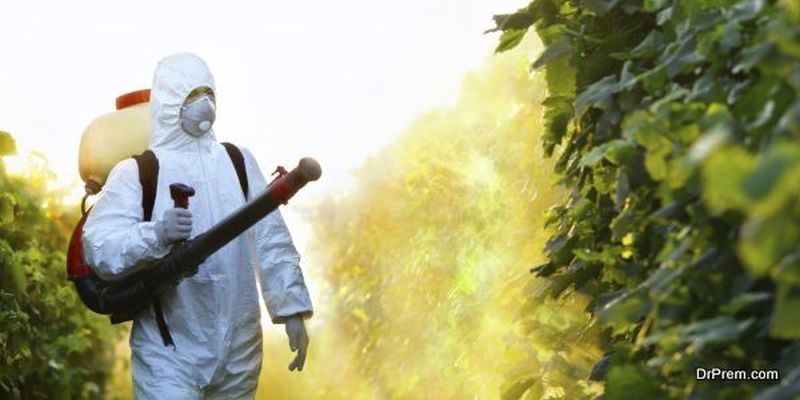 It may surprise you to know that seven of the most known toxic chemicals are allowed to be used as pesticides. According to a report by the Environmental Protection agency (EPA), more than 5.2 billion pounds of pesticides are used all over the world annually. The effect of this is worrying in terms of health and environment. In a study, Environmental and Economic Costs of the Application of Pesticides Primarily in the United States, the author David Pimetal has estimated that about $9.6 billion is spent by the U.S. alone to meet the health and environmental costs arising from the use of pesticides. Every year about 110,000 pesticide poisonings are reported in this country.
It may surprise you to know that seven of the most known toxic chemicals are allowed to be used as pesticides. According to a report by the Environmental Protection agency (EPA), more than 5.2 billion pounds of pesticides are used all over the world annually. The effect of this is worrying in terms of health and environment. In a study, Environmental and Economic Costs of the Application of Pesticides Primarily in the United States, the author David Pimetal has estimated that about $9.6 billion is spent by the U.S. alone to meet the health and environmental costs arising from the use of pesticides. Every year about 110,000 pesticide poisonings are reported in this country.
4. The impact
Starting from simple skin irritation to nervous breakdown, problems in reproduction, cancer, etc., pesticides can cause many serious health problems. According to an estimate by the United Nations Environment Program (UNEP), about 18,000 agricultural workers die and three million suffer serious poisoning every year in developing countries from the use of pesticides. In U.S alone, 23,000 people require emergency care because of their exposure to dangerous pesticides. Their impact has been particularly harsh on the population of bees. There are also a large number of environmental concerns arising out of the use of pesticides. They affect nitrogen fixation, contaminate soil, water and air, and pose a threat to the biodiversity of an area.
Green alternatives to pesticides
1. Crop rotation
 Crop rotation has been applied since ancient times as an effective method of controlling pests in the soil. It has been established that plants of similar taxonomic family tend to attract similar kind of pests and other pathogens. Here, the crop rotation method not only helps in regularly decreasing the population of pests, but also breaks or limit the pest cycle, naturally killing the pests.
Crop rotation has been applied since ancient times as an effective method of controlling pests in the soil. It has been established that plants of similar taxonomic family tend to attract similar kind of pests and other pathogens. Here, the crop rotation method not only helps in regularly decreasing the population of pests, but also breaks or limit the pest cycle, naturally killing the pests.
2. Diatomaceous Earth
Diatomaceous Earth (DE) is an ancient alga found naturally as fossilized diatoms. It can be used for preventing insect infestations of the food grains and for controlling parasites on the body of animals. Unlike the pesticides, the DE kills insects by entering into their body after tearing the body walls. It settles in the softer areas of their body, or around the joints and kills them effectively. The specialty of this alternative is that it doesn’t allow the insects to become immune to DE as they often do with other chemical pesticides.
3. Homemade sprays
 A few sprays can also be prepared at home for controlling pests in the garden. The items required for preparing these sprays are often available in the household. For example, hot chilli pepper spray can be prepared for killing caterpillars. A spray made from garlic also helps in killing many other types of pests in the garden.
A few sprays can also be prepared at home for controlling pests in the garden. The items required for preparing these sprays are often available in the household. For example, hot chilli pepper spray can be prepared for killing caterpillars. A spray made from garlic also helps in killing many other types of pests in the garden.
4. Entomopathogenic fungus
Entomopathogenic fungus (EF) is considered as a natural mortality agent for various pests and insects. While the pests act as parasites for plants and animals, the EF acts as a parasite of the pests. In other words, it derives its energy by living on the pests. EF attaches to the external body of pests in the form of microscopic spore. There it grows as a hyphae, eventually they bore through the body to reach the body cavity of its host.
Using Birds for Pest Control
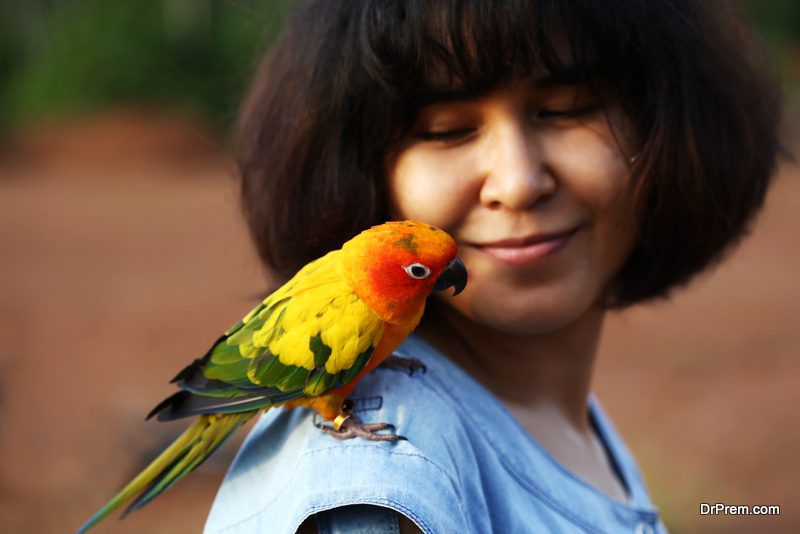 The best pest controllers are not chemical pesticides but could be our feathered friends. Farmers and homeowners who have farms or gardens are ‘bugged’ by bugs/insects of every kind. These insect pest chew and suck plants and sting and bite humans and animals. They wreak havoc on farms and gardens, creating economic loss in their wake. Using birds as pest fighters seem to be a very organic and viable solution, which will also eliminate the use of chemical pesticides. Here’s why and how you can use birds for pest control:
The best pest controllers are not chemical pesticides but could be our feathered friends. Farmers and homeowners who have farms or gardens are ‘bugged’ by bugs/insects of every kind. These insect pest chew and suck plants and sting and bite humans and animals. They wreak havoc on farms and gardens, creating economic loss in their wake. Using birds as pest fighters seem to be a very organic and viable solution, which will also eliminate the use of chemical pesticides. Here’s why and how you can use birds for pest control:
Why we should use birds for pest control?
 Birds are lovely to have around the garden, farms and yard. Birdsongs liven up the place, and they contribute greatly to spreading seeds leading to increasing plant/forest cover. They are also natural pest controllers, as their natural food is all kinds of insects. They consume hundreds of bugs, which can keep gardens and farms free of plant destroying pests, especially in early summer and late spring. At this time, birds love to eat and feed their hatchlings with fresh caught bugs.
Birds are lovely to have around the garden, farms and yard. Birdsongs liven up the place, and they contribute greatly to spreading seeds leading to increasing plant/forest cover. They are also natural pest controllers, as their natural food is all kinds of insects. They consume hundreds of bugs, which can keep gardens and farms free of plant destroying pests, especially in early summer and late spring. At this time, birds love to eat and feed their hatchlings with fresh caught bugs.
This fondness of birds for insects make them wonderful natural alternative to pesticides. Birds eat up whiteflies, cabbage worms, aphids, earwigs, cucumber beetles, spiders, grubs and grasshoppers.
How to attract birds to your garden/field
To use birds for pest control, you have to make your garden/farm bird friendly. First, you should find out exactly which insects are destroying your plants, and take measures to attract those birds which eat those specific insects. There are some general measures you can take such as the ones below to get pretty birds to visit your garden:
1. Water
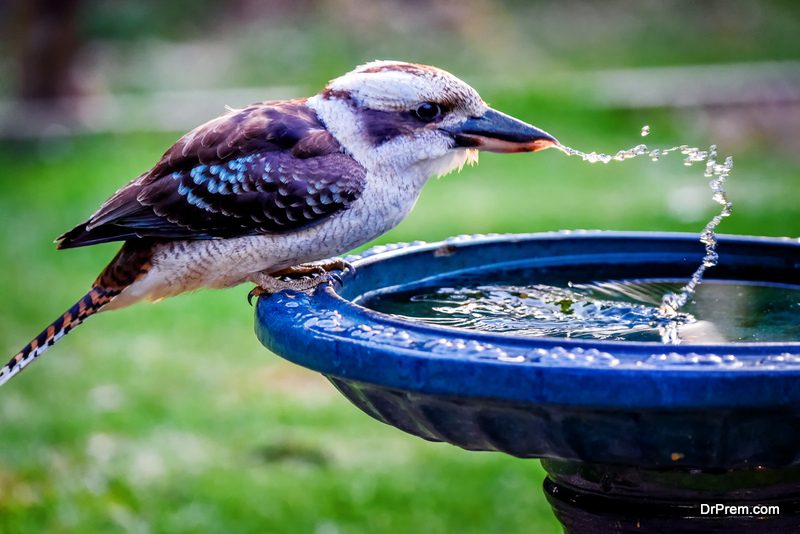 Any insect consuming bird is also attracted by water – water to drink and to bathe in. Did you know that birds are very attracted to moving water? So you can add a birdbath, and an outdoor fountain, which will be a beautiful outdoor garden feature too. Installing a re-circulating waterfall will make the birds flock to your garden.
Any insect consuming bird is also attracted by water – water to drink and to bathe in. Did you know that birds are very attracted to moving water? So you can add a birdbath, and an outdoor fountain, which will be a beautiful outdoor garden feature too. Installing a re-circulating waterfall will make the birds flock to your garden.
2. Add covers and perches
For some eco-friendly farming, using birds as pest control is a great alternative to chemicals. To do this, you have to make your garden/backyard or field bird friendly. Adding cover will provide birds places to take cover or hide from weather. Shrubs and small trees are quite appealing to birds, and if you don’t have any such natural shrubs or trees, you can create an area for them. Birds need places to nest, and nesting birds with newborn baby hatchlings will clear more pests from your yard. Adding cover will help to use birds for pest control.
In paddy fields, farmers who farm in eco friendly manner use organic nutrients, which improve the soil but enhance the growth of earthworms. Birds can eat up the earthworms, and adding perches such as coconut or palm tree perches will attract many birds. These birds will protect the paddy fields from insect pests, which reduce the cost of pesticides and helps farmers provide safe food to us.
3. Food
 Even though the birds will eat the insects and behave as the best natural alternative to pesticides, they still like to feed on seeds. Seeds blends appeal to grosbeaks, sparrows, cardinals and chickadees. Suet cakes which do not melt in the sun will attract woodpeckers and titmice which will also feed on insect larvae and other insects. So keeping some delicious birdfeed will also contribute to your eco-friendly farming efforts.
Even though the birds will eat the insects and behave as the best natural alternative to pesticides, they still like to feed on seeds. Seeds blends appeal to grosbeaks, sparrows, cardinals and chickadees. Suet cakes which do not melt in the sun will attract woodpeckers and titmice which will also feed on insect larvae and other insects. So keeping some delicious birdfeed will also contribute to your eco-friendly farming efforts.
What to do to attract specific birds according to pests?
1. To chase away spiders
 Wrens are great to control spider populations. Both house wrens and Carolina wrens love eating spiders as well as spider eggs. To invite wrens to your yard, plant some American beautyberry or other low growing shrubs. Provide nesting materials and foods such as brush piles on your garden’s or yard’s edge.
Wrens are great to control spider populations. Both house wrens and Carolina wrens love eating spiders as well as spider eggs. To invite wrens to your yard, plant some American beautyberry or other low growing shrubs. Provide nesting materials and foods such as brush piles on your garden’s or yard’s edge.
2. Small flying insects
To use birds for pest control, especially small pests like fruit flies and gnats, you should plant lots of flowers. Kinglets, vireos, hummingbirds and warblers love to visit gardens which have a good variety of flowering plants, which bloom in different times, as they love the nectar of these flowers. Azaleas, Lobelia (cardinal flower), bee balm, coral bells, foxglove, sage, columbines and trumpet creepers will attract hummingbirds.
Spruce, pine, cypress and messy brush piles invite warblers and kinglets. Berry plants such as sumac, blackberry, wild grapes etc will get warblers in droves to your garden. Planting mulberries, willows and Virginia creeper will attract vireos.
3. To get rid of large insects
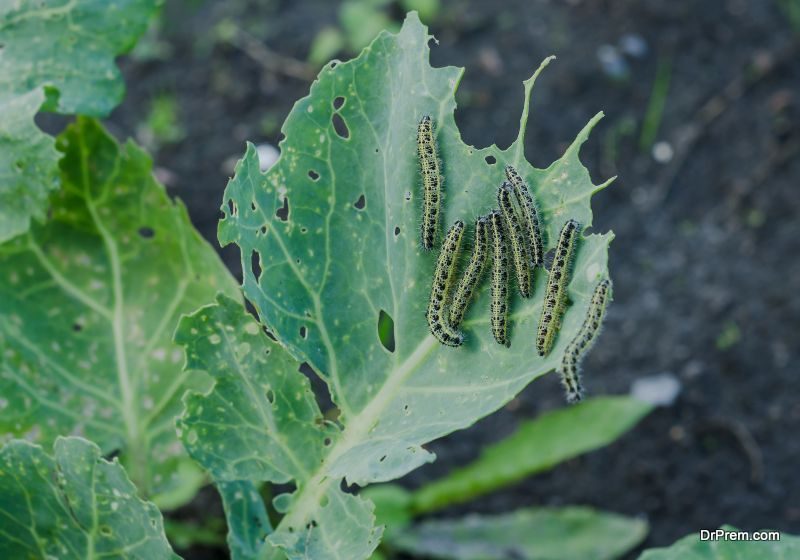 Japanese beetles and June bugs can destroy the leaves of beautiful garden plants turning them into shadows of their former glory. Their larvae become grubs which eat the lawn grass roots. To get rid of these as well as flying ants, you can get your beloved birds to work for you.
Japanese beetles and June bugs can destroy the leaves of beautiful garden plants turning them into shadows of their former glory. Their larvae become grubs which eat the lawn grass roots. To get rid of these as well as flying ants, you can get your beloved birds to work for you.
Make use birds for pest control by providing nesting such as martin house for Purple martins, and bluebird boxes for tree swallows. Barn swallows and Phoebes will nest in barns and sheds, on bridges and houses. The Great Crested Flycatcher build their nests in cavities and use nest boxes too.
4. To chase away yellow jackets and wasps
Whenever you see a wasp or a yellow jacket nest, your first instinct is to destroy it. But instead of doing that, plant some blueberry or blackberry bushes. This will attract the summer tanager that feed on the wasps, and fill your home with their beautiful song. If your yard has tall shade trees, it is a bonus as well, as tanagers love shade trees.
5. Keep rodents and insects in control with falcons
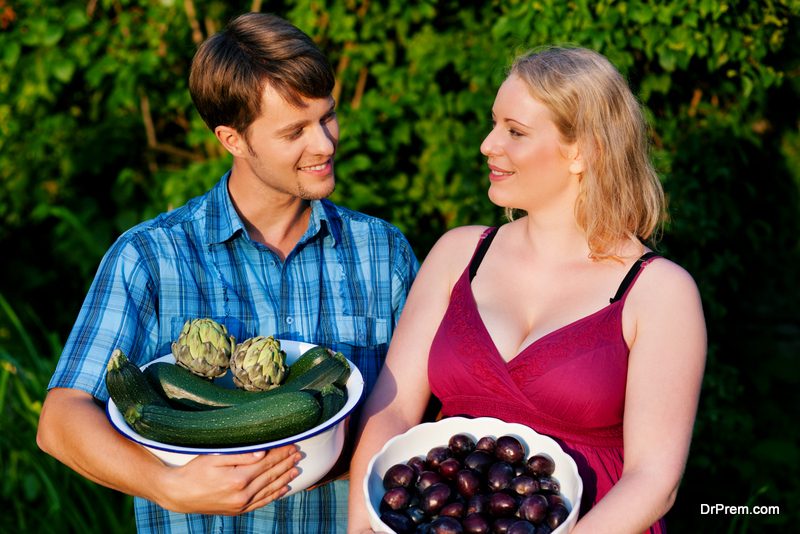 Some American fruit farmers use birds for pest control. Fruit farmers are plagued by voles, weevils, grasshoppers, fruit flies and small pest birds. Farmers put up nest boxes for American kestrels which are a small falcon species. If you are a fruit farmer you can use the falcons to control the pest population. You’d be doing them a favor too, as you can help to increase their numbers.
Some American fruit farmers use birds for pest control. Fruit farmers are plagued by voles, weevils, grasshoppers, fruit flies and small pest birds. Farmers put up nest boxes for American kestrels which are a small falcon species. If you are a fruit farmer you can use the falcons to control the pest population. You’d be doing them a favor too, as you can help to increase their numbers.
Plant growers all over the world now use birds for pest control. Birds as pest killers add charm to your garden, keep it lively and help you grow food and decorative plants in an organic, eco friendly way.
Conclusion
Eating fruits and veggies is very beneficial for health, whether they are organic, non-organic, pesticide-free or not. Your family’s diet should have plenty of these foods, and by following a few simple methods like rinsing well, soaking in baking soda-water and cooking will remove/reduce pesticides.



